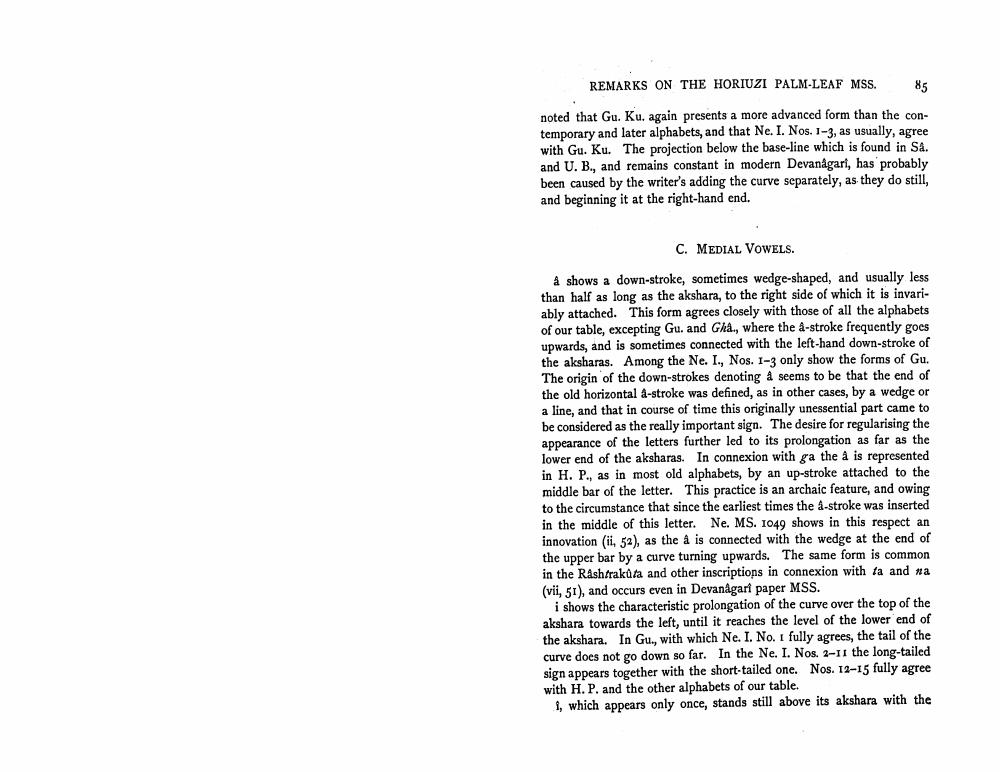________________
REMARKS ON THE HORIUZI PALM-LEAF MSS.
85
noted that Gu. Ku. again presents a more advanced form than the contemporary and later alphabets, and that Ne. I. Nos. 1-3, as usually, agree with Gu. Ku. The projection below the base-line which is found in Sa. and U. B., and remains constant in modern Devanagart, has probably been caused by the writer's adding the curve separately, as they do still, and beginning it at the right-hand end.
C. MEDIAL VOWELS.
& shows a down-stroke, sometimes wedge-shaped, and usually less than half as long as the akshara, to the right side of which it is invariably attached. This form agrees closely with those of all the alphabets of our table, excepting Gu. and Grå, where the a-stroke frequently goes upwards, and is sometimes connected with the left-hand down-stroke of the aksharas. Among the Ne. I., Nos. 1-3 only show the forms of Gu. The origin of the down-strokes denoting & seems to be that the end of the old horizontal a-stroke was defined, as in other cases, by a wedge or a line, and that in course of time this originally unessential part came to be considered as the really important sign. The desire for regularising the appearance of the letters further led to its prolongation as far as the lower end of the aksharas. In connexion with ga thea is represented in H. P., as in most old alphabets, by an up-stroke attached to the middle bar of the letter. This practice is an archaic feature, and owing to the circumstance that since the earliest times the a-stroke was inserted in the middle of this letter. Ne. MS. 1049 shows in this respect an innovation (ii, 52), as the à is connected with the wedge at the end of the upper bar by a curve turning upwards. The same form is common in the Rashtrakota and other inscriptions in connexion with ta and na (vii, 5!), and occurs even in Devanagari paper MSS.
i shows the characteristic prolongation of the curve over the top of the akshara towards the left, until it reaches the level of the lower end of the akshara. In Gu., with which Ne. I. No. 1 fully agrees, the tail of the curve does not go down so far. In the Ne. I. Nos. 2-11 the long-tailed sign appears together with the short-tailed one. Nos. 12-15 fully agree with H.P. and the other alphabets of our table.
1, which appears only once, stands still above its akshara with the




